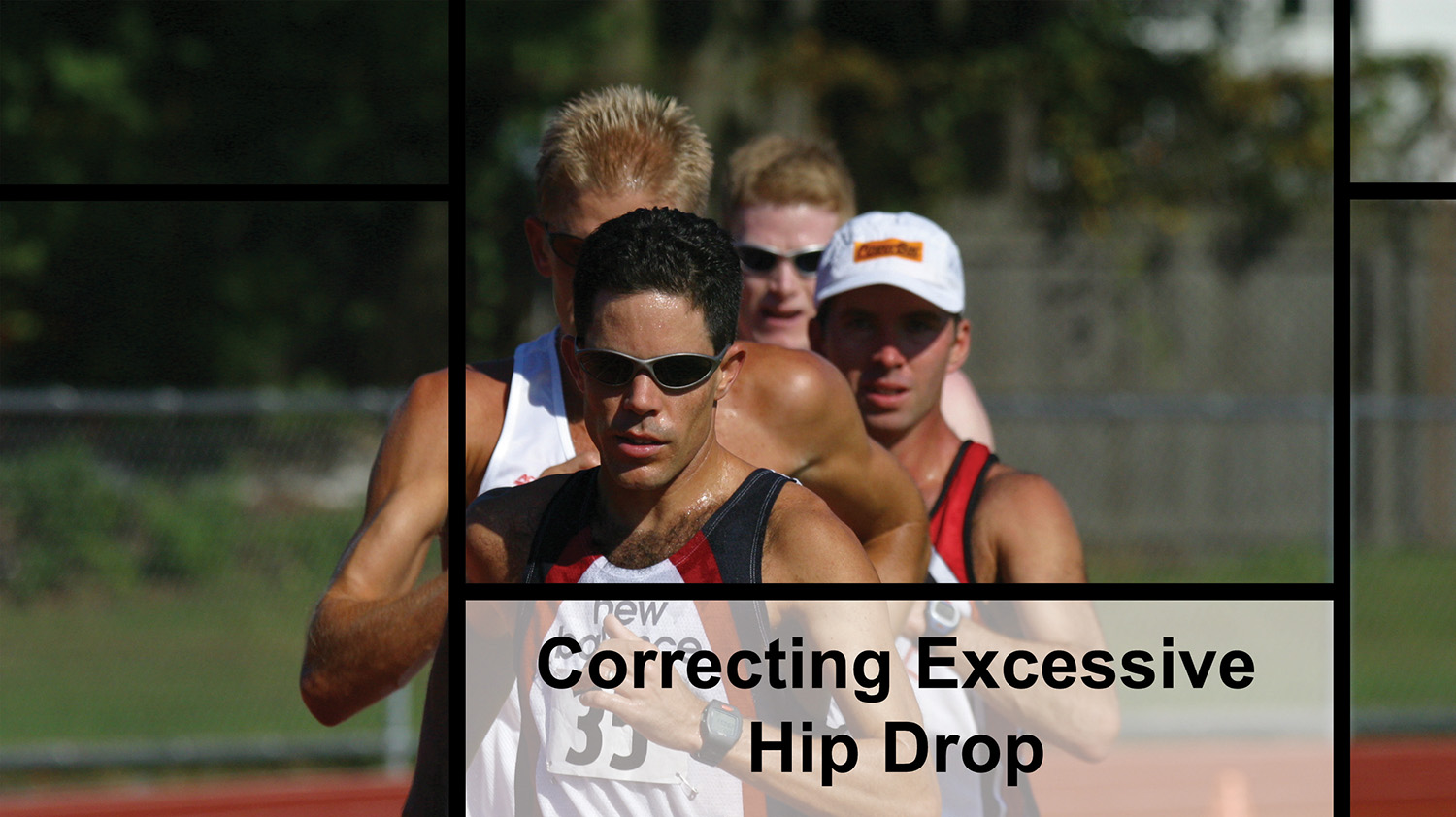
Excessive hip drop is a tricky issue for some race walkers. Part of the problem could be a misconception as to how the hip moves. While the hip has to move up and down, many race walkers falsely assume that it should be a more excessive vertical movement. For those walkers, correcting the problem is simply a matter of relearning the proper motion.
Other walkers, however, suffer from a lack of, or imbalance of strength and flexibility in the hips and core which causes the excessive hip drop. Often, when the hip drops, it also sways outward. While these two motions could occur independently, they are usually observed together. The hip sway compensates for the drop in center of gravity that is caused by the hip drop. Here are a series of exercises and stretches to help correct excessive hip drop and sway.


A side effect of rotating your hips forward is that your feet land in a straight line. Therefore, when you perform the Straight Line Walking drill by literally race walking along a straight line, your tendency to sway outward with your hip is reduced.
Body Position
This drill is performed while race walking.
Steps
- Race walk along a straight line, such as a lane divider of a track (Figures 9-1 & 9-2).
- As you walk, focus on your hips, reaching forward as the advancing leg swings forward.


If you are swaying to the side instead of driving your hip forward, resynchronize your hips by doing the Long Strides – Long Arms drill.
An improvement in forward hip rotation is likely to improve your ability to straighten the knee on impact and keep it straightened until your leg passes the vertical position. When your hips rotate forward, the amount of your stride in front of your torso is reduced, thus reducing the likelihood that your leg bends as you ride forward on it. Therefore, the Long Strides - Long Arms drill and any other drills that target improved forward hip rotation are very useful to avoid bent-knee issues.
Body Position
Perform this exercise while race walking.
Steps
- Keeping both arms straight and your hands flat with your palms back, race walk with an exaggerated stride by driving your hips forward (Figures 5-35 & 5-36).
- Perform this exercise for 30 meters. You should feel a connection between your arms and hips.
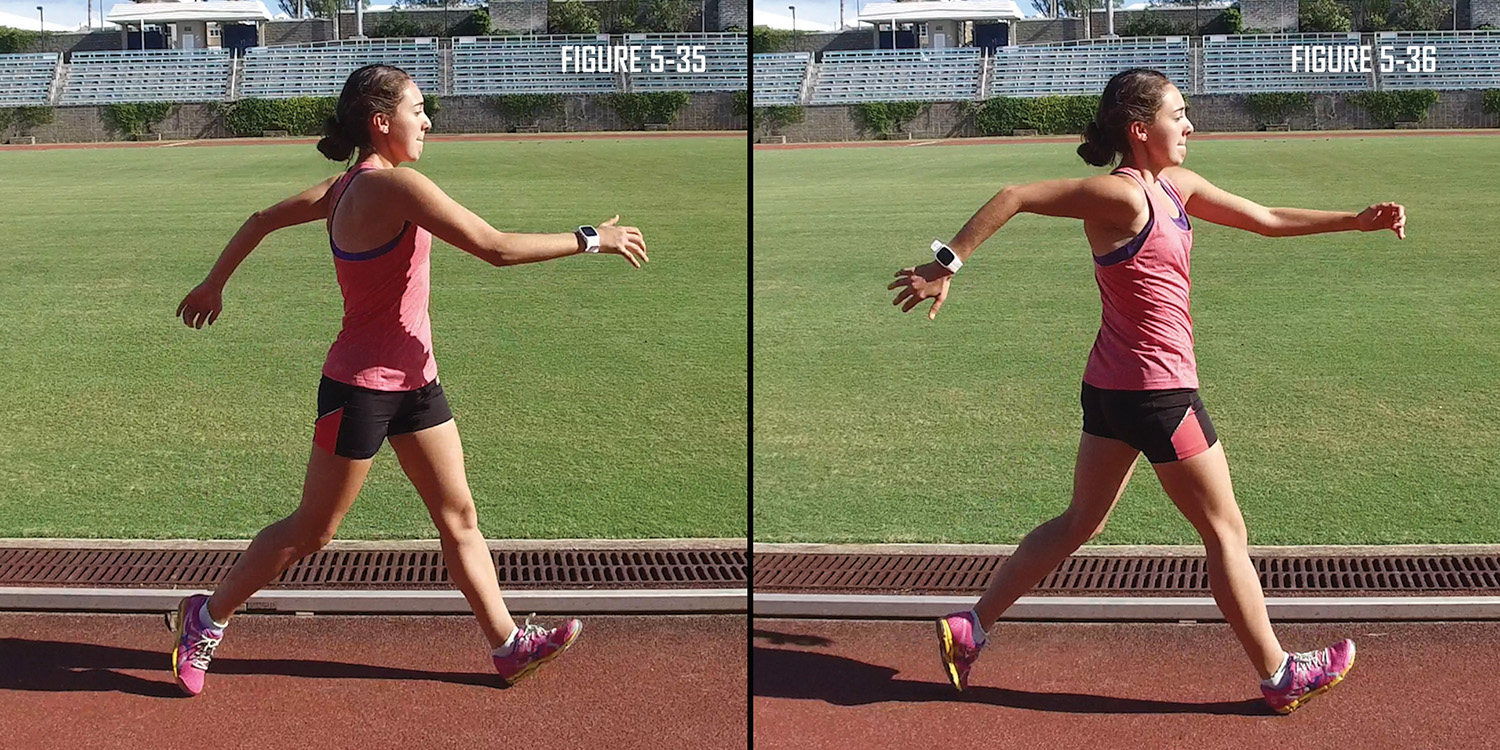

Lie on your side. For an added effort, place a light weight on the upper leg or use resistance bands between the thighs. The Bridge with Ball exercise strengthens the lower back muscles and hamstrings. This is a complementary exercise that helps but is not specific to one hip rotation problem. Lie on your back. The Elastic Band Leg Strap Exercise strengthens your hip abductors to help in preventing your hip from dropping excessively. Place an elastic band around your lower legs and stand in a partial squat position with your legs a shoulder’s width apart. For those with excessive hip drop, the Side Straight Leg Raise exercise strengthens the hip abductors without the need to go to the gym. Weak hip abductors are one reason the hip may drop excessively in race walking. This exercise can be done with or without a light ankle weight. Start without weight and gradually add light weights, building up to but never exceeding 10 percent of your body weight. Lay on your side with both legs extended. Your lower leg may be slightly bent for balance, while your top leg should be fully extended. Additionally, your lower arm is extended, and your upper arm is used for support. For those with excessive hip drop, the Lower Side Straight Leg Raise exercise strengthens the hip adductors without the need to go to the gym. Weak hip adductors are one reason the hip may drop excessively in race walking. This exercise can be done with or without a light ankle weight. Start without weight and gradually add light weights, building up to but never exceeding 5 percent of your body weight. Lay on your side with the lower leg extended out straight and the upper leg bent in a triangular position. Additionally, your lower arm is extended, and your upper arm is used for support. The Hip Flexor – Lunge Forward stretch is great for working on tight hip flexors which inhibit proper forward hip rotation. Place your right knee on the ground with your right foot extended behind you. Place your left foot on the ground in front of you, making sure the left knee stays behind the ankle. The Piriformis stretch is great for stretching the muscle located within the glutes. Due to the excess hip rotation of a race walker’s stride, this muscle tends to tighten, which can lead to an injury known as piriformis syndrome. Lay on back. Tight hip flexors inhibit proper forward hip rotation. Kneel on the ground, preferably soft ground.Body Position
Steps


Body Position
Steps
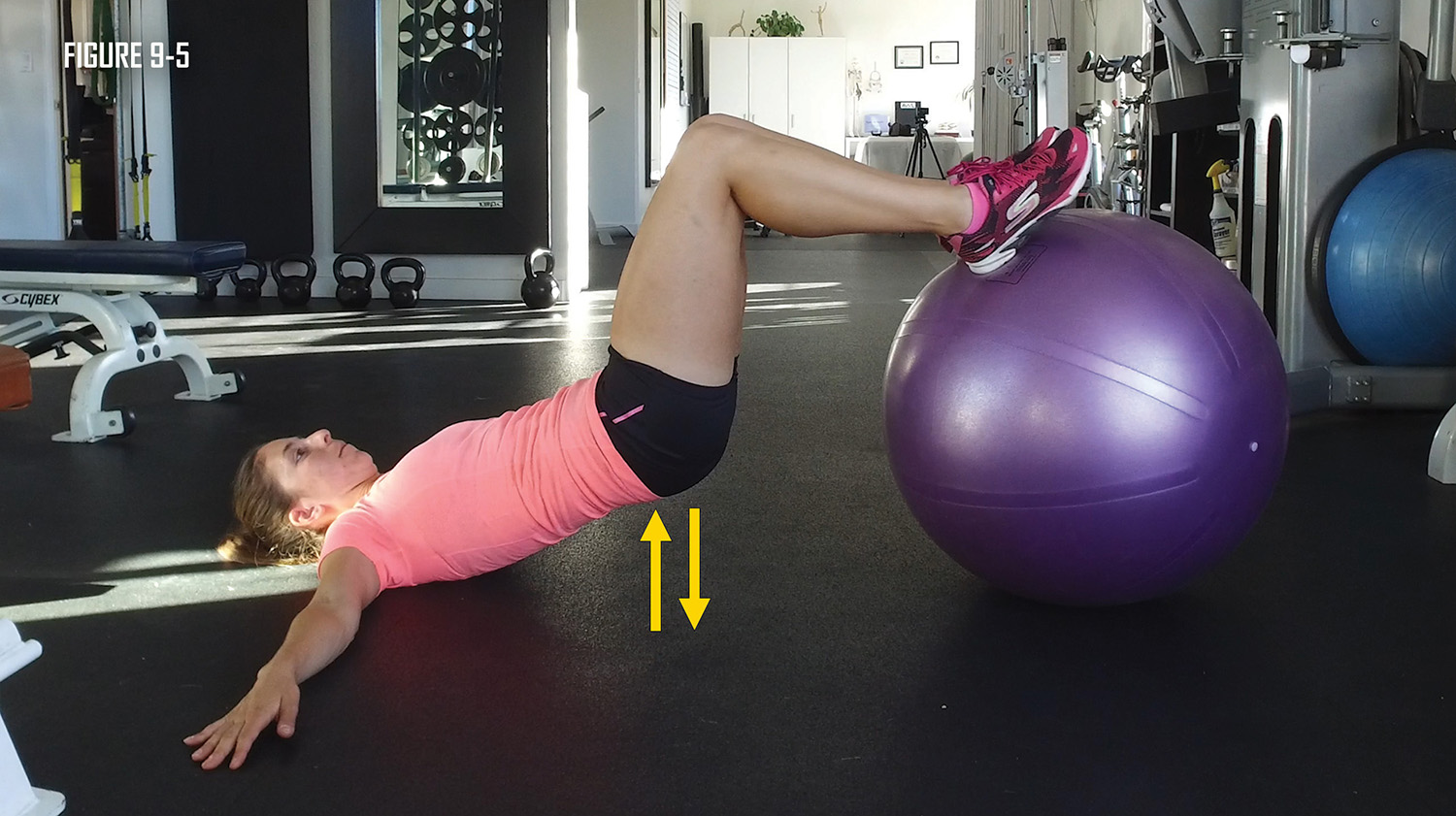

Body Position
Steps


Body Position
Steps
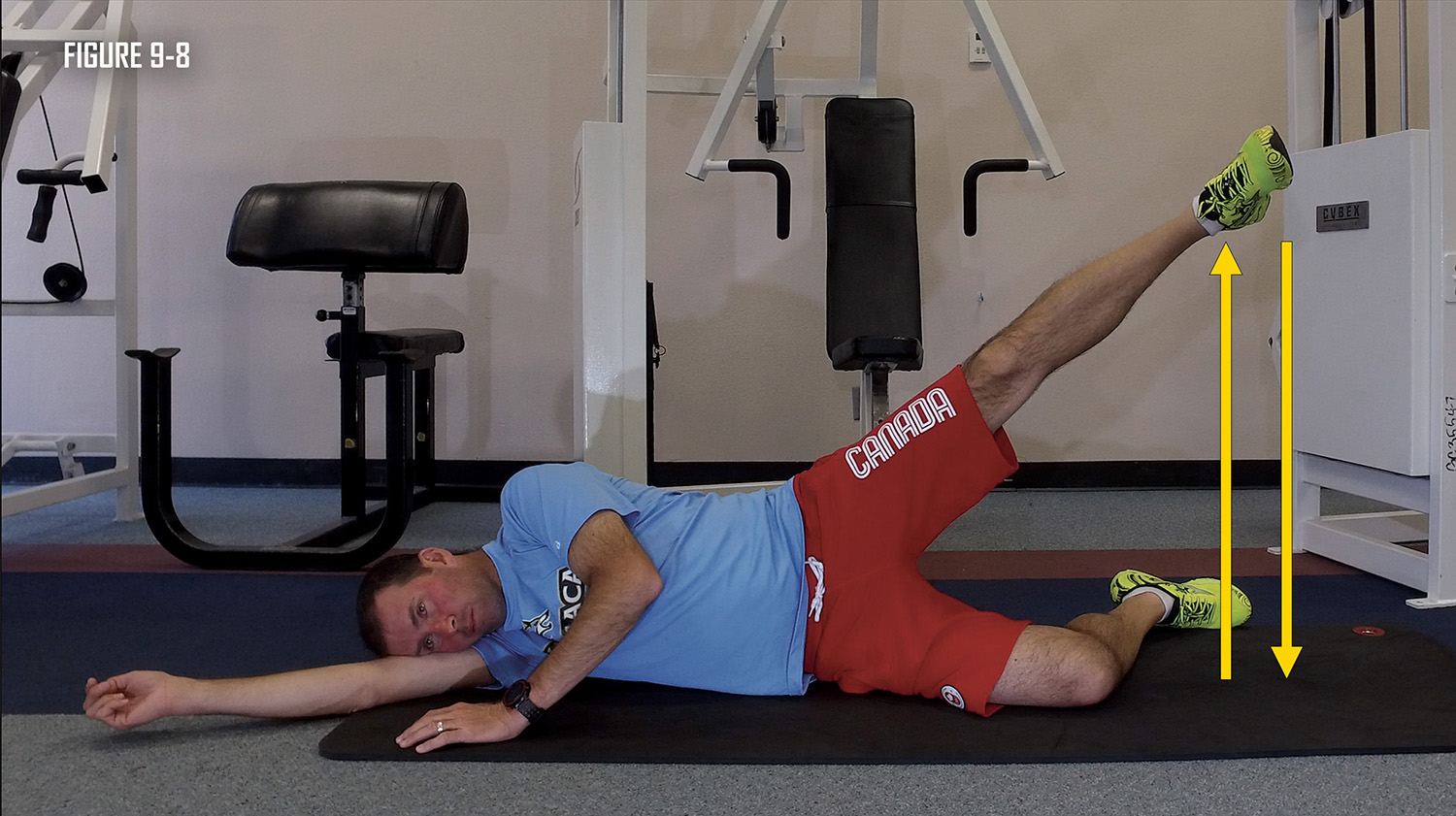

Body Position
Steps
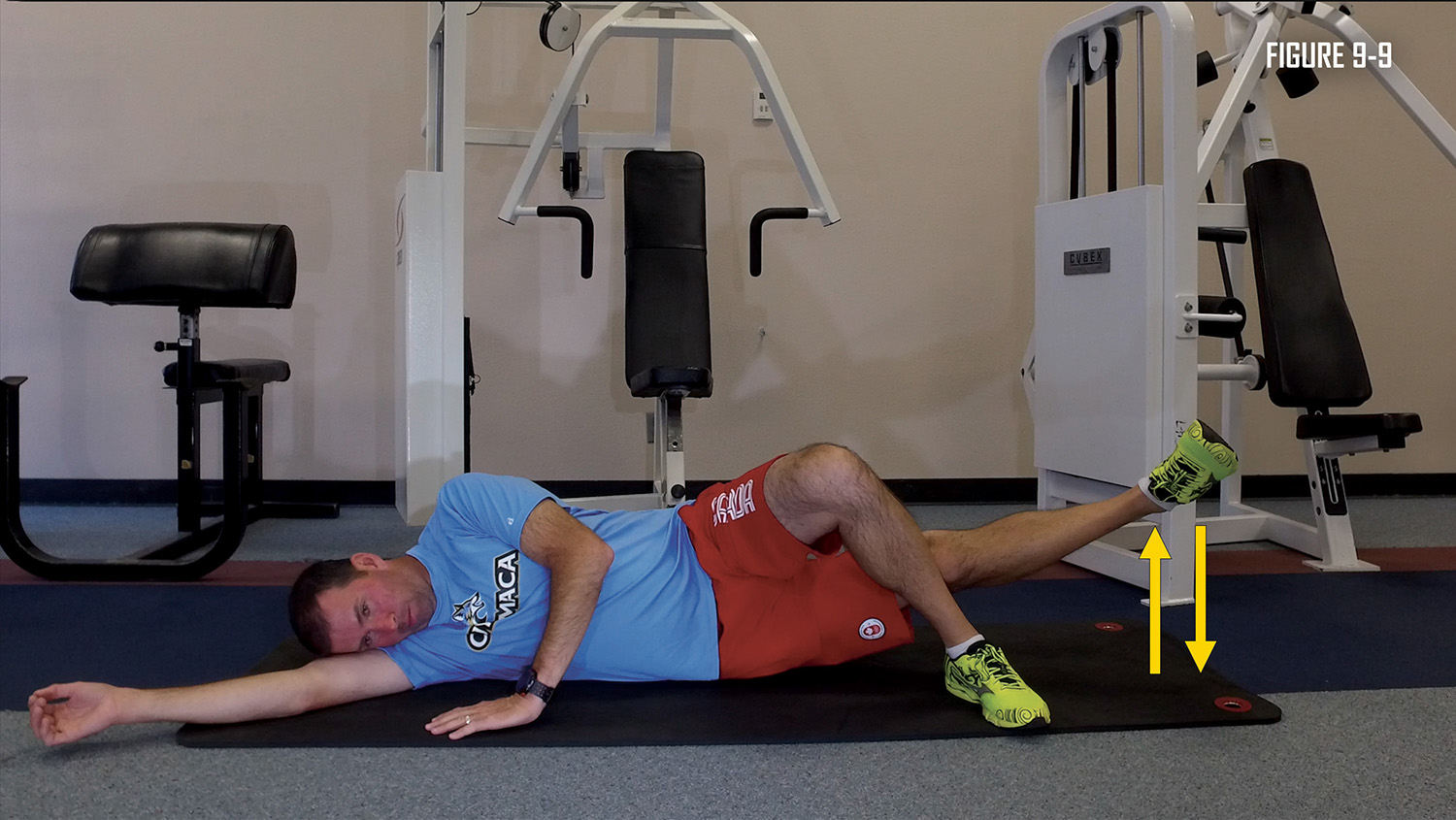

Body Position
Steps


Body Position
Steps


Body Position
Steps
